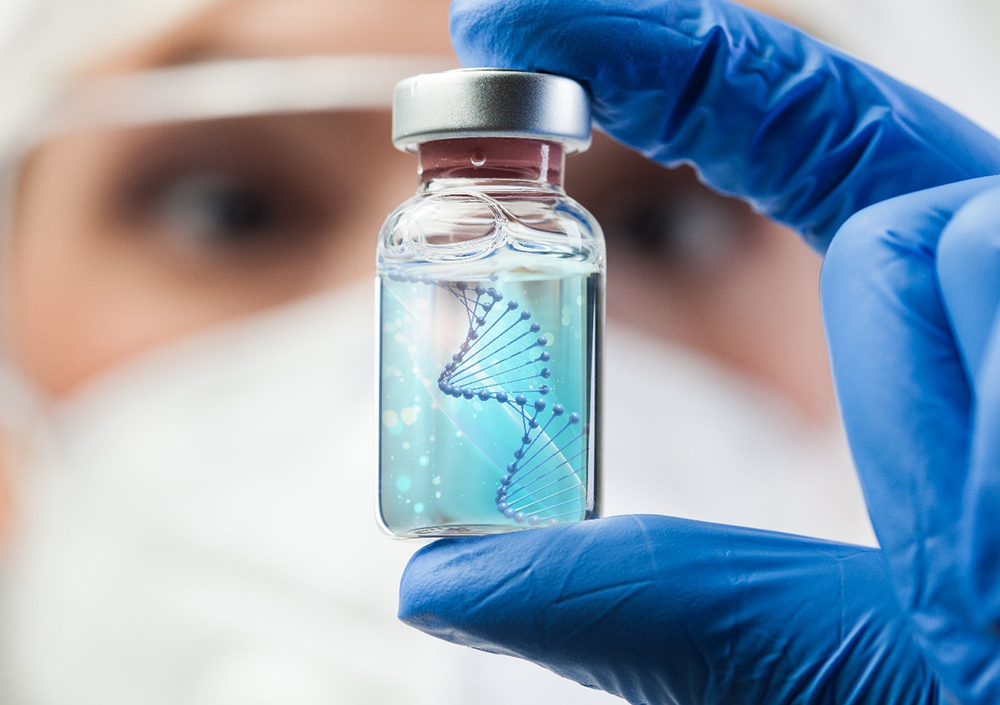Under the U.S. Food and Drug Administration’s (FDA’s) fast-track approval process, nadofaragene firadenovec-vncg (Adstiladrin®) became the first gene therapy approved for the treatment of high-risk non-muscle invasive bladder cancer. Approximately 75% of newly diagnosed bladder cancers are classified as non-muscle invasive. Bacillus Calmette Guérin (BCG) has been used as first-line therapy for more than 20 years, but eventually 30%–50% of patients stop responding, and nadofaragene firadenovec-vncg offers a new treatment option. FDA’s December 2022 approval was based on complete response (CR) and duration of response from Study CS-003, which demonstrated a 46% CR for at least one year.
Category/Class
Non-replicating adenoviral vector-based gene therapy
Mechanism of Action
Nadofaragene firadenovec-vncg delivers a copy of a gene that encodes for an antitumor protein. Once instilled, the gene creates a localized expression of the protein directly in the bladder urothelium, exposing the cancer cells to the protein for an extended period of time.
Indication
Treatment of adult patients with high-risk, BCG-unresponsive, non-muscle invasive bladder cancer with carcinoma in situ with or without papillary tumors
Dosing
75 ml of nadofaragene firadenovec-vncg at a concentration of 3 x 1,011 viral particles (vp)/ml, instilled once every three months
Administration
Administer via intravesical instillation only. Specific administration training may be required. The full instillation process can be found on page 4 of the package insert.
- Premedicate patients with an anticholinergic drug before each instillation.
- Maintain nadofaragene firadenovec-vncg in the bladder for one hour.
- During the one-hour dwell time, reposition the patient every 15 minutes from left to right and back to front to maximize bladder surface exposure.
- If a patient experiences bladder cramping or premature voiding, adjust their position or discontinue the dwell time.
Additional administration information is available on pages 2–4 in the package insert.
Adverse Reactions
During the drug’s clinical trials, more than 10% of patients reported instillation site discharge, fatigue, bladder spasm, micturition, hematuria, chills, pyrexia, and dysuria. More than 15% experienced increased glucose, triglyceride, and creatinine and decreased phosphate levels.
Nursing Considerations
- Obtain a pregnancy test from patients of reproductive potential.
- Review potential side effects with patients.
- Describe the instillation process and what they can expect.
After administration, ensure patients and caregivers understand the safe-handling precautions to follow at home and when to call the healthcare team.
Patient Education
Delayed cystectomy may increase your risk for metastatic bladder cancer. All patients and their partners of reproductive potential should use contraception during and for six months following treatment with nadofaragene firadenovec-vncg. You may shed low levels of the medication in your urine for up to two days following treatment. Disinfect your urine for 30 minutes with an equal volume of bleach before flushing.
Special Considerations
Nadofaragene firadenovec-vncg is not recommended for patients who:
- Have experienced hypersensitivity to interferon alfa or any component of the product
- Are immunocompromised because of risk for disseminated adenovirus infection
No information is available about the effects for pregnant patients and their fetus or breastfed infants of patients receiving nadofaragene firadenovec-vncg. Study populations were mostly aged 65 or older, and no conclusions can be drawn about safety or efficacy in younger age groups. No significant sex-based differences were noted.
Safe Handling
Follow hazardous drug safe handling practices and medication exposure precautions. Because of the risk for splashing, wear an eye and face shield in addition to standard hazardous drug administration personal protective equipment. Treat any spills with a virucidal agent (e.g., sodium hypochlorite with 0.5% active chlorine, 6% hydrogen peroxide solution) for 30 minutes. Dispose materials that have contacted nadofaragene firadenovec-vncg in biohazard containers. Decontaminate nondisposable equipment according to your facility’s standard operating procedures.






